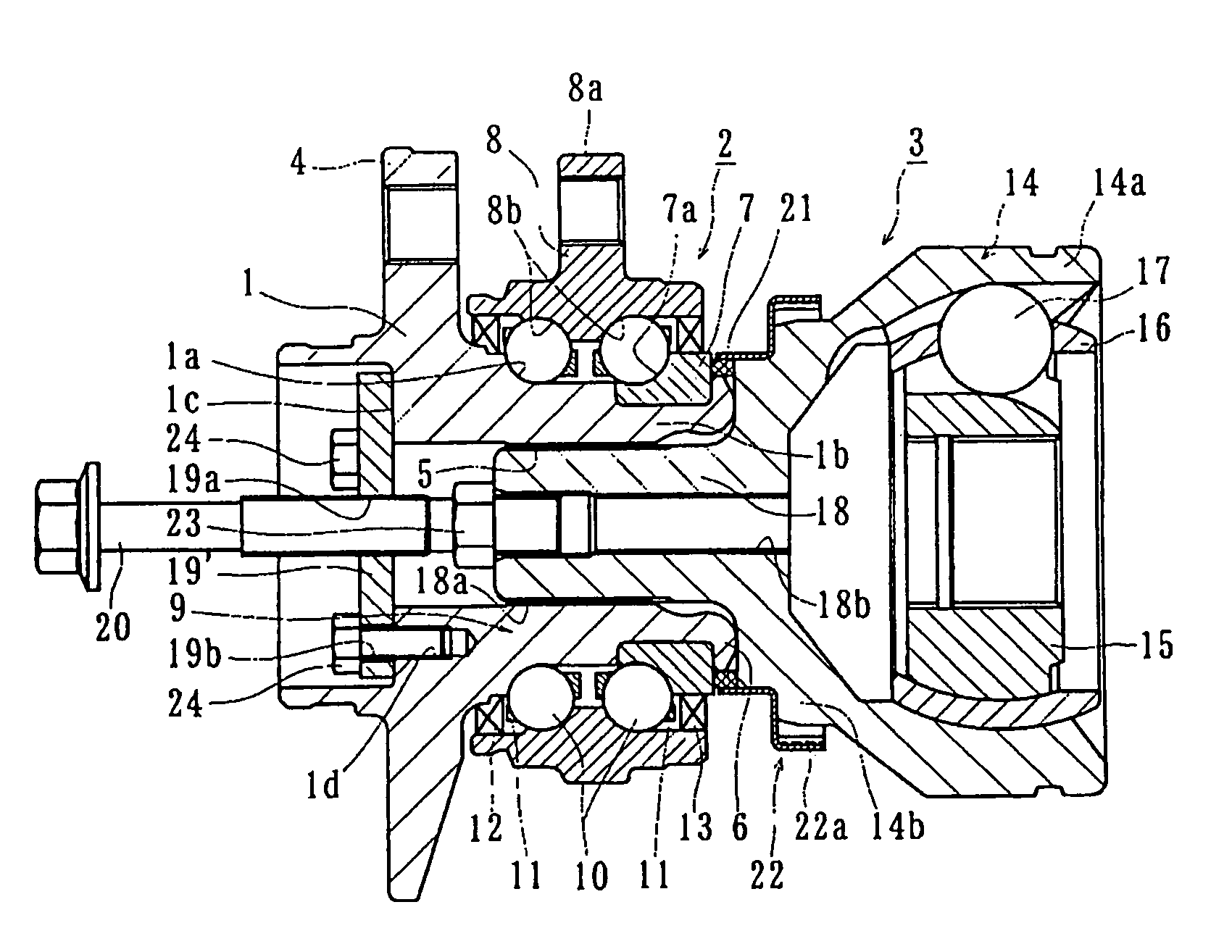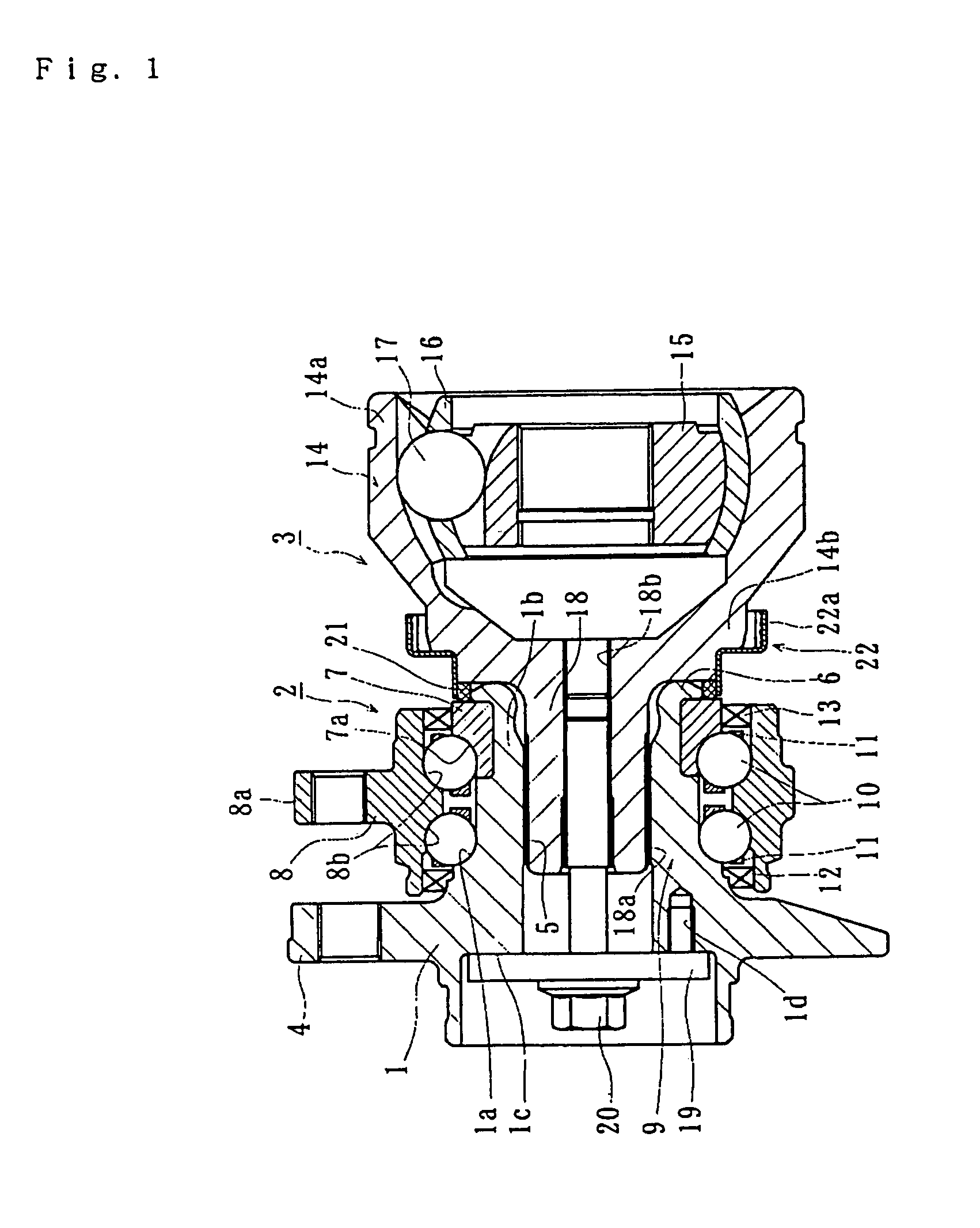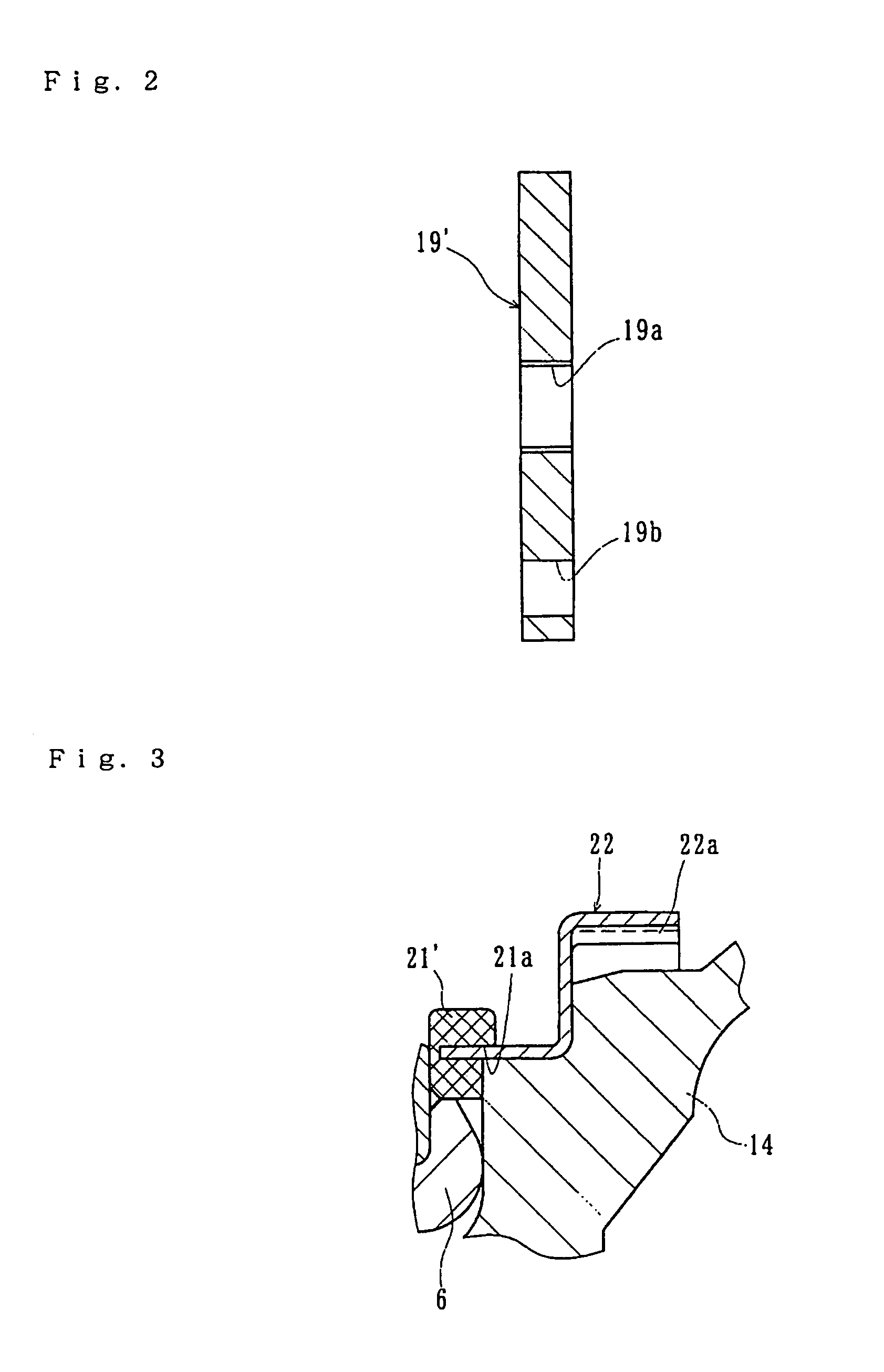Bearing apparatus for a driving wheel of vehicle
a technology for driving wheels and bearings, which is applied in the direction of rigid support of bearing units, couplings, instruments, etc., can solve the problems of reducing the working efficiency, reducing requiring assembly or disassembly, so as to reduce the weight of bearing apparatuses, improve the working efficiency in assembly, and facilitate the disassembly
- Summary
- Abstract
- Description
- Claims
- Application Information
AI Technical Summary
Benefits of technology
Problems solved by technology
Method used
Image
Examples
first embodiment
[0034]Preferred embodiments of the present invention will be hereinafter described with reference to the accompanied drawings. FIG. 1 is a longitudinal section view showing a bearing apparatus for a vehicle driving wheel of the present invention.
[0035]The apparatus has a wheel hub 1, a double row rolling bearing 2 and an constant velocity universal joint 3 which are assembled as a unit. In the description below, the term “outboard side” of the apparatus denotes a side which is positioned outside of the vehicle body. The term “inboard side” of the apparatus denotes a side which is positioned inside of the body when the apparatus is mounted on the vehicle body.
[0036]The wheel hub 1 is formed integrally with a wheel mounting flange 4 at the outboard side of the wheel hub 1 on which a wheel (not shown) is mounted. The wheel hub 1 has an inner raceway surface 1a at the outboard side of the double row rolling bearing 2. A cylindrical stepped portion 1b of smaller diameter axially extends ...
second embodiment
[0048]A method for disassembling the bearing apparatus of the second embodiment will be described with reference to FIG. 6. First, the securing nut 27 fastened onto the outer end surface 1c of the wheel hub 1′ is removed. The caulked portion 27a of the securing nut 27 is deformed. A releasing jig 28 is inserted within a pilot portion le of the wheel hub 1′. The inner circumferential surface is formed with an internal thread 29 and the outer circumferential surface of the releasing jig 28 is formed with an external thread 28a to engage with the internal thread 29. FIG. 7(a) is a front elevation view of the releasing jig 28. FIG. 7(b) is a cross section view. The releasing jig 28 has a generally cup-shaped configuration and is formed with a flat chamfered surface 28b on its bottom and a internal thread 28c at its center.
[0049]The bolt 30 is screwed into the internal thread 28c of the releasing jig 28. The tip end of the bolt 30 abuts the stem portion 26. Thus, the outer joint member 2...
PUM
| Property | Measurement | Unit |
|---|---|---|
| Angle | aaaaa | aaaaa |
Abstract
Description
Claims
Application Information
 Login to View More
Login to View More - R&D
- Intellectual Property
- Life Sciences
- Materials
- Tech Scout
- Unparalleled Data Quality
- Higher Quality Content
- 60% Fewer Hallucinations
Browse by: Latest US Patents, China's latest patents, Technical Efficacy Thesaurus, Application Domain, Technology Topic, Popular Technical Reports.
© 2025 PatSnap. All rights reserved.Legal|Privacy policy|Modern Slavery Act Transparency Statement|Sitemap|About US| Contact US: help@patsnap.com



